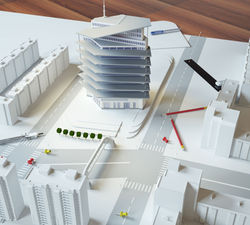 |  |  |  |  |  |  |
|---|---|---|---|---|---|---|
 |
Think outside THE BOX
3rd Grade








See a short clip of a group's project and the process they engaged in during a 30 minute visit.
See a short clip of the group's final product they shared during their community exhibition.
We want students to be creative and see past the obvious to other possibilities. What is the genius of a cardboard box? A cardboard box often contains something of value until it’s opened and devalued. Then the box is often discarded. Boxes are usually dull in color and shape, a brown cube. Their goods have been removed, and only emptiness remains.
However, when people move, they often have to be creative in their new house until the furniture arrives and is unpacked, so they use boxes for tables and chairs. In many countries like Ethiopia, millions of people don’t have windows in their houses and have leaking roofs. Ethiopians can be extremely resourceful and creative by using cardboard boxes to cover holes when it rains or to make a bed for lying on the wet grass. Boxes can be quite strong and reused often if taken care of. The beauty of a box is the limitless nature of it. We want students to be creative and see past the Think Outside the Box.
This project will jumpstart the new school year by getting the students engaged in a fun, hands-on project that includes creative play and major design principles. It was inspired by Caine’s Arcade and his Imagination Foundation Global Cardboard Arcade Challenge. Students will engage in important work that builds a strong sense of community, utilizes the design principles to critique and solve problems, uses literature to deepen understandings, communicates ideas through speaking and writing, and integrates math, science, literacy and engineering concepts and skills.
Students will design and create a cardboard arcade game out of recycled material with Scratch programming, LED lights, and a Makey Makey Interface. Students will produce final designs that demonstrates planning, collaboration, critique, and mathematical concepts (i.e., measurement and geometry). Students will build prototypes that allow for testing and reiterating. Students will find and solve problems in literature using an engineering design approach (i.e., Novel Engineering). Students will write and publish personal narratives about a time that they played, and a fictional narrative about the arcade (e.g., when the arcade comes to life at night). Students will have the options to complete extensions, such as 3D modeling and more advanced programming.